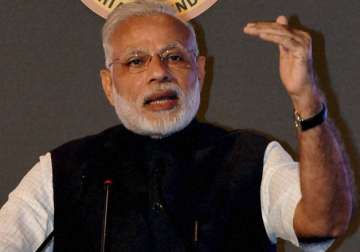Prime Minister Narendra Modi today outlined 10-point agenda for renewing efforts towards disaster risk reduction.
Inaugurating the Asian Ministerial Conference on Disaster Risk Reduction (AMCDRR) in New Delhi, the PM said that all development sectors must imbibe the principles of disaster risk management and a network of universities should be developed to work on disaster issues.
The Prime Minister also called for greater involvement and leadership of women in disaster risk management.
He said, opportunities provided by social media and mobile technologies should also be utilised.
“Women are disproportionately affected by disasters. They also have unique strengths and insights. We must train a large number of women volunteers to support special needs of women affected by disasters. We need women engineers, masons and building artisans supporting reconstruction, and women self help groups assisting livelihood recovery,” he said.
The Prime Minister said there should be investment in risk mapping globally, leveraging of technology to enhance the efficiency of the disaster risk management efforts and utilising the opportunities provided by social media and mobile technologies.
He also spoke of building on local capacity and initiative, ensuring that the opportunity to learn from a disaster is not wasted and bringing about greater cohesion in international response to disasters.
Modi said a fully functional Indian Ocean Tsunami Warning System has become operational and along with its Australian and Indonesian counterparts, the Indian National Centre for Ocean Information Services is mandated to issue regional tsunami bulletins.
"The same goes for improvements in cyclone early warning. In India, if we compare the impact of cyclone events in 1999 and 2013, we can see the progress we have made.... It led to a significant reduction in loss of lives from cyclones. It is now recognised as a global best practice," he said.
The Prime Minister also urged authorities responsible to deal with disasters to learn from age-old local practices and implement the same effectively.
With PTI Inputs

